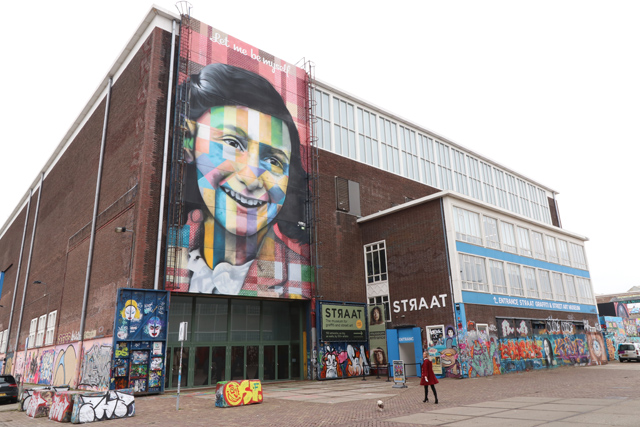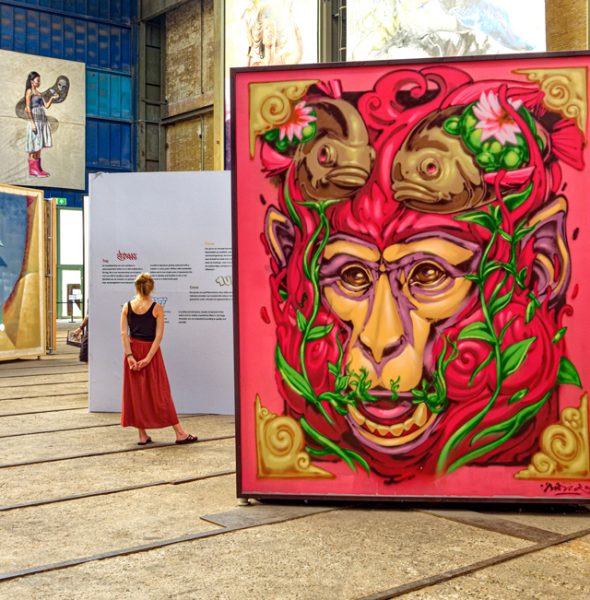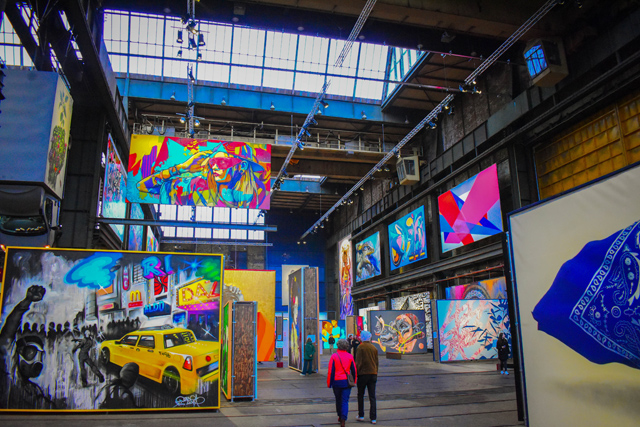
There is no shortage of world-class museums in Amsterdam. For many of us, the list often starts and stops with the Rijksmuseum and the Van Gogh museum. But here’s a secret: The best museum in Amsterdam doesn’t contain a single painting by an old master. If you want to experience art in a whole new way, check out STRAAT, the largest street art museum in the world.
STRAAT = Street art
A quick primer: Street art is what a lot of people call graffiti. You see it on trains, walls, bridges, water towers, and pretty much anywhere in most cities. In a lot of places, street art is still against the law. Thus, for many street artists, the very act of grabbing a spray can is an expression of rebellion. Which leads to an interesting question: Can a street art museum actually contain street art? If there’s nothing to rebel against, is it still street art?
In the case of STRAAT, the answer (for me, anyway) is a resounding yes. Why? Well, rebellion isn’t always about violating civic ordinances. Sometimes it’s about seeing something, or presenting something, in a totally new way. It’s about breaking the mold.

Not your everyday museum building
STRAAT’s building definitely breaks the mold. There’s nothing sumptuous or classical about it. In fact, it once was an engineering workshop for the Netherlands Dock and Shipbuilding Company (NDSM). In other words, it was blue collar, functional, and as non-arty as you can get. And then it was abandoned when NDSM went bankrupt in the 1980s.
Nowadays, it makes for a killer street art museum. The high ceilings and exposed metal beams inside give just the right feel for a place where the masterpieces are literally sprayed on the walls. And the building has been completely overhauled to feel like a city, complete with streets, squares and intersections. Even if you’ve seen a ton of museums, the feel inside STRAAT is one of a kind.

And of course, there is the art
Naturally, one of the museum’s most iconic pieces is spray-painted on the building’s exterior. A massive mural of Anne Frank hovers over the entrance, a reminder from the Brazilian artist Eduardo Kobra that a key component of a civilized world is respect for the differences and identities of others.
Inside the museum, things get amazing. Works by artists with names such as MonkeyBird, Eoin, BIMS, Welin and Mr. June fill the space with color, shapes, whimsy, and provocation. Many of the works contain a staggering level of detail, to the point that it seems impossible that they were carried out with cans of spray paint.
But spray paint was used, and is being used, which is part of the joy of STRAAT. It is a living, breathing art museum. You’ll see artists at work, putting new pieces on the walls, adding to the more than 150 works already inside, painted by 140 artists from more than 30 countries. Many are classically trained. Many more are not. But all of them are incredibly skilled.
Get into the act
If you’ve never been bold enough to pick up a can of paint and tag a random wall (full admission: I was/am way too much of a rule follower, so I haven’t), then you can rebel in relative peace at STRAAT.
The museum offers 60-minute art and graffiti workshops for adults and children ages 12 and older every Saturday between 11:30 a.m. and 1:30 p.m. between March and October. You’ll learn how to use spray paint, and try your hand at painting in large ship containers next to the museum. It’s an excellent way to gain more insight into the genius and mastery of really good street artists. Because making decent art with spray paint is difficult.
STRAAT essentials
Getting to the museum is easy. From Amsterdam Central Station, you can take a quick (less than 15 minutes), free ferry across the water to the NDSM wharf where the museum is located.
Admission for adults is €19.50. For youths 13-18, a ticket costs €9.50. Admission is free for children 12 and younger. STRAAT is open daily from 10 a.m. to 5 p.m. except for Mondays, when the museum is open noon to 5 p.m.


